Casualties from World War One
From a time and place before Welwyn Garden City
By Robert Gill
During the First World War, a number of residents living in what is now part of Welwyn Garden City were mobilised and went off to the front to defend their country. A total of 22 did not return and are commemorated on a memorial constructed at the junction of Hollybush Lane and Homestead Lane in Welwyn Garden City. This memorial was built in 1919 at a cost of £85 18s 9d by the Parish of Hatfield Hyde for those men from Hatfield Hyde and Mill Green who lost their lives during World War One. World War Two casualties were added later.
In 1979, a second memorial was constructed in Howardsgate in the centre of Welwyn Garden City which contains the same names as those on the original Hollybush memorial. This memorial is the focus of the towns rememberance service held each November.
The names from WW1 recorded on both memorials are:
ALBERT BAKER
WILLIAM BRAY
ALBERT BUTTERWORTH
FREDERICK COOPER
GEORGE COOPER
WILLIAM COOPER
THOMAS GRIFFIN
DAVID GROOM
JOHN HIPGRAVE
FREDERICK HOOKER
ARTHUR HUNT
FREDERICK HUNT
WALTER IVORY
CHARLES LANKESTER
GEORGE MARTIN
HAROLD PEART
LEONARD SCOTT
CHARLES SHARPE
DAVID SHARPE
FREDERICK SPRINCETT
JAMES STARKEY
REGGIE WREN
From the commencement of hostilities, the monthly edition of the Hatfield Paris Magazine published the names of those within the Parish of Hatfield (which at the time included Hatfield Hyde and Mill Green) who were mobilised. The following is an extract from the Magazine dated October 1914:
We are publishing another list of those men who are serving in the forces and we may add that many more were willing to go but were not accepted because of some physical disability. Some men it is true have not offered; for whatever reason they did not offer themselves they will probably regret it in times to come; there will always be someone who will remember it and asks them why and they will naturally feel ashamed if they have not had good reason. England is our mother, she has protected us and cared for us and if in her extremity we are afraid to fight for her we ourselves must feel undying shame. Amongst those who offered but could not be accepted were (Ed: names not repeated here). One or two others still impatiently await their commissions, which we hope they are sure to get eventually.
At the end of the war, every family of the deceased and returning serviceman from the Parish of Hatfield was presented with a bound book known as a Memorial and Roll of Honour. This was used as the basis of the following information on those who died.
Details of the 22 individuals named on the memorials are as follows:
ALBERT BAKER
Albert Baker was born in 1880 in Hatfield Hyde, Hatfield. In 1881, he lived at Beer Houses, Mill Green, Hertfordshire, his father being a general labourer. At some stage, Albert emigrated to Canada where he married Margaret Louise. On 2 September 1918, he was killed in action in France whilst serving with the 2nd Seaforth Highlanders. He is commemorated on the family headstone in St Lukes’s Churchyard, Hatfield.
WILLIAM BRAY
Herbert (William) Bray was born in 1883 in Hatfield Hyde. In 1911 at then age of 28, he was living at 4 Sandpit Cottages in Hatfield Hyde and worked with his father as Stationary Engine worker on a farm. In September 1914, he was mobilised into the Territorials. On 21 st June 1916, Herbert at the age of 32 and now a Corporal in the Hertfordshire Regiment was wounded in action in France and subsequently died of his injuries at the 39th Stationary Hospital at Aire-sur-La-Lys near St Omer. He is buried in Aire Communal Cemetery.
ALBERT BUTTERWORTH
Albert Butterworth was born in 1880 in Hadley, Middlesex. In 1911, he was living at 36 Calvert Road, Barnet and worked in a livery stable. He had a family of 4 children, the oldest being aged 7 years. Albert joined the Royal Army Service Corp (8 th Royal Irish Rifles) and died on active service on 26th October 1917 in England as a Private. His death certificate records that cause of death at age 38 years was Addison’s disease which he had been diagnosed for some 6 months, his place of death was the Military Hospital, Trent Bridge, Nottingham and he is buried in Nottingham General Cemetery. The hospital where Albert died was the Trent Bridge Miltary Hospital in the Nottingham County Cricket Pavillion which was converted into a hospital during the war, some 3500 soldiers being cared for.
FREDERICK COOPER
Frederick Charles Cooper was born in 1893 in Hatfield, Hertfordshire. In 1911 at the age of 18, he was living at the Woodman Public House, Hatfield Hyde, Hertfordshire where his father was the Publican; Frederick was an apprentice carpenter at the time. Frederick joined the 1st Hertfordshire Regiment but was killed in action in France on 22 March 1918. He has no known grave and is commemorated on the Pozieres Memorial which is near the town of Albert. He was probably killed as a result of ‘Operation Michael’, the German offensive which overran the old Somme Battlefield in March 1918.
GEORGE COOPER
George Ernest Cooper was the older brother of Frederick Cooper. He joined the 23rd Middlesex Regiment and was killed in action in Comines, France on 28 September 1918 by which time he was a Lance Corporal. His death was probably due to a German offensive in 1918 to retake the Ypres Salient that had been hard won by the allies over three major campaigns since 1914. George has no known grave and is commemorated on the Tyne Cot Memorial to the Missing north east of Ypres (now Lepres).
WILLIAM COOPER
William Cooper was born 1894 in Hertfordshire. In 1911, he lived in Flint Cottage, Hatfield Hyde, Hertfordshire and was working as a Mill Hand at a local flour mill. His father, Arthur Cooper was a Farmhand. William was mobilised in October 1914 and joined the 8th Bedfordshire Regiment. He was killed whilst serving in the Royal Army Medical Corps attached to the 20th Battalion, London Regiment on 19 April 1916 on the Ypres salient. He has no known grave but is commemorated on the Ypres (Menin Gate) Memorial.
The following was published in the Hatfield Parish Magazine July 1916:
The parents of Private Cooper of Flint Cottage, Hatfield Hyde, received last month the grievous news that he was ‘missing’, a word which chills the stoutest heart, for alas it so seldom means that there is hope.
Dear Madam, I am sincerely sorry to have to inform you that your Brother, Pte. W J Cooper is missing and believed killed. He was in the trenches when they were bombarded by the Germans on April 19th, and he has not been seen since. It is with deep regret that I have to write this as he was a good soldier and a man that could be relied on. What small consolation I can offer you I honestly do; perhaps you will feel proud of him when I tell you he stuck to his post until the last. So again sympathizing with you in your loss, I remain, yours sincerely, Sgt A Hancock, Machine Gun Section.
THOMAS GRIFFIN
Thomas Griffin was born in 1896 at Watten in Hertfordshire. In 1911, he was living with his sister and her husband at West-End, Essendon, Hertfordshire working as a Farm Labourer. He was mobilised in 1916 and joined the 1st Bedfordshires. On the 23rd April 1917, Thomas, a private in the 4th Bedfordshire Regiment, was killed in action on the Arras Offensive which took place from April – May 1917 and has no known grave. He is commemorated on the Arras Memorial.
DAVID GROOM
David Groom was born in 1884 at Norton Green, Hertfordshire. In 1911 he was living at 13 Sandpit Cottages in Hatfield Hyde, Hatfield, Hertfordshire where he worked as a Sandpit Labourer. He was married with 3 children. David was mobilised in December 1914 and joined the 4th Bedfordshire Regiment. David died at the age of 32 in Salonika as a Private in the 5th Royal Irish Fusiliers on the 30 September 1916, cause of death was due to being taken ill with malaria from which he subsequently died at the base hospital in Salonika. He is buried in Mikra British Cemetery, Kalamaria.
JOHN HIPGRAVE
John Hipgrave was born in 1874 in Hatfield, Hertfordshire. In 1911, he was living as a boarder in Hatfield Hyde, Hatfield where he worked as a General Labourer. His mother, by now a widow, was still living in Roe Green, Hatfield where she was a Washing and Charing woman. John was mobilised in September 1914 and joined the 3rd Bedfordshire Regiment. John by now a Corporal in the 2nd Bedfordshire Regiment was killed at the age of 42, on 2nd December 1914 in Flanders and is buried at Ration Farm Military Cemetery, La Chapelle Darmentieres. John had a brother, William Hipgrave who was in the 5th Bedfordshire Regiment and was killed in France in September 1917.
FREDERICK HOOKER
Frederick Hooker was born in 1892 in Tottenham, London. In 1911, he was living as a lodger in Hatfield Hyde, Hatfield, Hertfordshire where he worked as Sandpit Labourer. His parents were living in Park Street, Hatfield where his father worked in a Brewery. Frederick was mobilised in October 1914 and joined the 3rd Bedfordshire Regiment. In September 1916, Corporal Frederick Hooker was killed during the Somme Offensive and has no known grave. He is commemorated on the Thiepval Memorial near Bapaume.
On 1 July 1916, supported by a French attack to the south, thirteen divisions of Commonwealth forces launched an offensive on a line from north of Gommecourt to Maricourt. Despite a preliminary bombardment lasting seven days, the German defences were barely touched and the attack met unexpectedly fierce resistance. Losses were catastrophic and with only minimal advances on the southern flank, the initial attack was a failure. In the following weeks, huge resources of manpower and equipment were deployed in an attempt to exploit the modest successes of the first day. However, the German Army resisted tenaciously and repeated attacks and counter attacks meant a major battle for every village, copse and farmhouse gained. At the end of September, Thiepval was finally captured. The village had been an original objective of 1 July. Attacks north and east continued throughout October and into November in increasingly difficult weather conditions. The Battle of the Somme finally ended on 18 November with the onset of winter.
The Thiepval Memorial, the Memorial to the Missing of the Somme, bears the names of more than 72,000 officers and men of the United Kingdom and South African forces who died in the Somme sector before 20 March 1918 and have no known grave. Over 90% of those commemorated died between July and November 1916.
ARTHUR HUNT
Arthur Hunt was born in 1894 in Hitchin, Hertfordshire. In 1911, he was living at 33 Wratten Road, Hitchin, Hertfordshire where he worked as a Postman. In September 1914, Arthur was mobilised into the Royal Navy and joined HMS Natal. On 30 December 1915, Arthur who was a Stoker was killed on HMS Natal whilst in the Cromarty Firth in Scotland. He is commemorated on the Chatham Naval Memorial.
HMS NATAL was a Duke of Edinburgh-class armoured cruiser built for the Royal Navy in the mid-1900s. Launched 30 September 1905, she escorted the royal yacht in 1911–1912 for the newly-crowned King George V’s trip to India to attend the Delhi Durbar. During World War 1 the ship was assigned to the 2nd Cruiser Squadron of the Grand Fleet, but did not participate in any battles. On 30 December 1915, HMS NATAL was lying in the Cromarty Firth with her squadron, under the command of Captain Eric Back. The captain was hosting a film party onboard and had invited the wives and children of his officers, one civilian friend and his family, and nurses from the nearby hospital ship Drina to attend. A total of seven women, one civilian male, and three children were in attendance that afternoon. Shortly after 15:25, and without warning, a series of violent explosions tore through the rear part of the ship. She capsized five minutes later. Some thought that she’d been torpedoed by a German U-boat or detonated a submarine-laid mine, but examination of the wreckage revealed that the explosions were internal. The divers sent to investigate the ship reported that the explosions began in either the rear 9.2-inch shellroom or the 3-pounder and small arms magazine The Admiralty court-martial in the causes of her loss concluded that it was caused by an internal ammunition explosion, possibly due to faulty cordite. The Admiralty issued a revised list of the dead and missing that totaled 390 in January 1916, but did not list the women and children on board that day. Losses are listed from 390 to 421.
The accident which sank HMS NATAL, and/or similar explosions in the period in BULWARK and VANGUARD were declared as due to unstable cordite. There was much talk of sabotage at the time but cordite, introduced in the early 1890s, was alarmingly prone to deteriorate to a point at which spontaneous combustion occurred. The deterioration took some years, so it was a while before the problem was realised – a propellant originally thought to be much safer than gunpowder (in a test carried out in 1897 the bottom box of a stack of cordite boxes was fired in a magazine, and burned fiercely but without igniting the others) could reach a point at which the whole contents of a ship’s magazine would explode with little or no warning. Prior to 1914 there were a string of accidents caused by deterioration of cordite, but those concerned thought the problems had been solved by introduction of stringent testing and improved storage/handling procedures. During WW1,however, the greatly-increased demand by the Army for munitions led to corner-cutting in their manufacture and storage: it is also possible that RN ships were issued with cordite which in peacetime would have been regarded as over-age. Sabotage was in reality most unlikely – the magazine explosions in all three ships were literally ‘accidents waiting to happen’. At the same time, however, further improvements during the war in the manufacture of propellants and explosives made them much safer to store and handle – the explosion resulting in VANGUARD’s loss in 1917 was the last explosion in a British warship attributed solely to unstable ordnance.
Note: In February 1916, the Hatfield Parish Magazine reported Arthur Hunt’s death as due to drowning as a result of the sinking of HMS NATAL in the Mediterranean which conflicts with the above report.
FREDERICK HUNT
Frederick Hunt was born in 1889 in Hitchin, Hertfordshire. In 1911, he was living at West End, Essendon, Hatfield and was married to Edith Nellie Griffin. Frederick was a farm labourer. Frederick was mobilised in May 1916 and joined the 2/5th Bedfordshire Regiment. On 18 August 1917, Frederick who was now in the 1/2nd Royal Fusiliers was wounded and subsequently died, he is buried in Brandhoek New Military Cemetery No 3 near Poperinge in Belgium.
WALTER IVORY
Walter Ivory was born in 1899 in Hatfield, Hertfordshire. In 1911, he was living at 9 Sandpits Cottages, Hatfield Hyde, Hatfield, Hertfordshire where he was still at school. His father worked as a Brewery Dray. In April 1917, Walter Ivory was mobilised and joined the Territorials. In July 1917, he transferred to the 3rd Norfolk Regiment. On 8 August 1918, a shell splinter through the head killed Walter, age 20 and a Private in the 7th Battalion Norfolk Regiment. He was buried in Morlancourt British Cemetery No 2 which is south of Albert. The village of Morlancourt was a quiet place used by field ambulances in 1916, but at the end of March 1918, it was captured by the Germans. Local operations in May and June brought the Allied line nearer to it, but the village remained in German hands until 9 August, when it was taken by the 1/1st Cambridgeshire Regiment and tanks.
CHARLES LANKESTER (Note: name spelt in error)
Arthur Charles Lancaster was born in 1887 in Hatfield,Hertfordshire. In 1911, Charles was already in the Army serving with the 2 nd Cheshire Regiment overseas. His parents were living at Woodhall Lodge, Mill Green, Hatfield, Hertfordshire where his father was a gardener. On 11th August 1917 whilst a Private with the 10th Cheshire Regiment, Charles aged 30, was killed in action at Poperinghe in Belgium and was buried in Brandhoek New Military Cemetery. During the First World War, Brandhoek was within the area comparatively safe from shell fire which extended beyond Vlamertinghe Church. Field ambulances were posted there continuously.
The Battle of Passchendaele 31st July 1917 – Day 1
The First Stage of the Third Battle of Ypres began with The Battle of Pilckem Ridge. Third Ypres is more usually called the Battle of Passchendaele. Zero Hour was 3.50am.
Like the Battle of the Somme, Passchendaele was fought partly to take pressure off the French Army which was by this time at the point of collapse. Unlike the Somme, this battle had a strategic aim too. A breakthrough here would enable the British to capture the ports along the Belgian coast which were being used by German submarines. Unfortunately The Germans were not the only enemy. The terrain and the weather combined to create the enduring picture of warfare on the Western Front – men fighting in a mud bath. Most of what was the Ypres Salient is reclaimed marshland. The shelling destroyed the drainage and the summer of 1917 was very wet indeed, 21.7mm of rain fell on 31st July. Almost all of the battlefield became a swamp that swallowed men, animals, guns and tanks.
Note: There was a prison at Poperinghe used by the British Army to detain deserters some 390 of whom were executed there. There is no evidence that Charles Lancaster was a deserter though cause of his death is not known.
GEORGE MARTIN
George Martin was born in 1897 in Offley near Hitchin, Hertfordshire. In 1911, he was working as a cowman and living in Hatfield Hyde with his widowed mother. In January 1915 he was mobilised and joined the 4th Bedfordshire Regiment. In November 1915, the Hatfield Parish Magazine reported that George was wounded, he was subsequently discharged from the Army on medical grounds. In October 1917 it was reported that he had been killed during an air raid in London.
His death certificate records the following:
When and where died: 24th September 1917, Southampton Row near Bedford Hotel
Age: 21 years
Occupation: Stoker at Hotel of 17 Guilford Street, St Pancras
Cause of Death: Shock Injuries to body and lower limbs consequent of bomb thrown from an enemy aircraft.
Informant: Inquest held 28th September 1917
Some research has shown that others killed in the same raid at the same place include Australian soldiers one of whom was listed as ‘Absent Without Leave’ (AWOL). There is also a report in the newspapers that those killed were standing in doorways outside the hotel and not taking sensible cover.
The raid itself was carried out by Gotha bombers of the German Air Force and was the first of such night raids by this aircraft. Prior to this, there had been a number of Zeppelin raids over London.
24-25 September, London, 30 defence sorties.
16 Gothas despatched, 13 attacked.
The Southern part of a 2 prong attack with Gothas attacking London and Zeppelins raiding the Midlands and the Northeast.
The Gothas crossed the English coast between Orfordness and Dover, 19.03-20.13 hrs.
3 reached London, with 6 attacking Dover, the remaining 4 scattering their bombs at Southend, Tilbury, Chatham, Sheppey and West Malling.
HAROLD PEART
Harold Peart, was born in Islington, London in 1889. He left UK on 18 September 1914, at the age of 25, as a butcher on the ship IONIC arriving in Wellington, NZ. His brother was Isaac Thomas Peart who in 1911 lived in Southwark, London. Harold joined the New Zealand Army Machine Gun Corp and was posted from New Zealand to France in April 1917. Harold was related to James Peart who was a farmer at Woodhall Farm, Hatfield Hyde. On 31 August 1918, Lance Corporal Harold Peart was killed in action in France and is buried in Bagneux British Cemetery, Gezaincourt.
LEONARD SCOTT
Leonard Scott was born in 1894 in Kings Langley, Hertfordshire. In 1911, he was living at Waterside Cottages, Mill Green, Hatfield, Hertfordshire and was working in the hay trade with his father. He was mobilised in November 1914 and joined the Kings Own Territorial Light Infantry. On 12 October 1918, Leonard, now a Lance Corporal aged 36, died in hospital at Le Treport in France after being gassed, cause of death was heart failure. He was buried at Mont Huon Military Cemetery, Le Treport.
CHRISTOPHER SHARP (Brother of David below)
Christopher George Sharp was born in 1893 in Knebworth, Hertfordshire. In 1911, he was living with his parents at 10 Sandpit Cottages, Hatfield Hyde, Hatfield, Hertfordshire where he worked as a Farm Labourer. His father worked as a Sandpit Labourer. On January 1915, Christopher was mobilised and joined the 1st Hertfordshire Territorials. On 9 November 1915 at the age of 23, and a Private in the 2nd Bedfordshire Regiment, he died at No. 1 Casualty Clearing Station as a result of wounds received. He was buried in Chocques Military Cemetery which is north west of Bethune.
DAVID SHARP (Brother of Christopher above)
David Sharp was born in 1897 in Langley, Hertfordshire. In 1911 he was living with his parents in 10 Sandpit Cottages, Hatfield Hyde, Hatfield, Hertfordshire and worked as a Farm Labourer. In July 1915, David Sharp failed to pass a medical examination but in December 1915, he was mobilised and joined the 3 rd Bedfordshire Regiment. On 7 April 1918 at the age of 23 and a Private in the 4th Bedfordshire Regiment, he was killed in action. He has no known grave and is commemorated on the Pozieres Memorial near Albert.
The POZIERES MEMORIAL relates to the period of crisis in March and April 1918 when the Allied Fifth Army was driven back by overwhelming numbers across the former Somme battlefields, and the months that followed before the Advance to Victory, which began on 8 August 1918.The Memorial commemorates over 14,000 casualties of the United Kingdom and 300 of the South African Forces who have no known grave and who died on the Somme from 21 March to 7 August 1918.
FREDERICK SPRINCETT (Note: name spelt in error on the memorials)
Frederick Springett was born in 1898 in Ramsgate, Kent. In 1911, he was living at Hatfield Hyde with his parents, his father being a Gamekeeper whilst Frederick was still at school. Frederick Springett was mobilised in January 1916 and joined the 2/1st Hertfordshire Regiment. On 3 July 1916 at the age of 18 and now with the Essex Regiment, Frederick was killed in action . He was buried in Sierre Road Cemetery No 2 near Albert.
JAMES STARKEY
James Starkey was born in 1894 in Hatfield, Hertfordshire. In 1911 at the age of 17, he was living in Mill Green, Hatfield, Hertfordshire where he was a student. His father was a General Engineer. James Starkey was mobilised in January 1916 and joined the Royal Naval Air Service which became the Royal Air Force in 1918. On 6 November 1918 at the age of 26 and a 1st Air Mechanic RAF, James died in Lincoln County Hospital and was buried in St Luke’s Churchyard, Hatfield. His death certificate records that he died from Influenza and Septicaemia. As he died in Lincoln and Lincoln played an important role in the WW1 air campaign, it is highly likely that James Starkey spent most of his military time in the Lincolnshire area.
REGGIE WREN
Reggie Wren was born in 1899 in Hatfield Hertfordshire. In 1911, he was one of 10 children living with their parents at Hatfield Hyde, Hatfield, Hertfordshire and was at school, his father was a Ballast Pit Labourer. Reggie Wren was mobilised in December 1915 and joined the 1st Hertfordshire Regiment. In October 1917, Reggie now with the 17th Royal Welsh Fusiliers was wounded in a gas attack when German forces advanced. He was returned to England where on 8 April 1918 at the age of 19, he died of his wounds. He was buried in St Mary Magdalene Churchyard, Hatfield Hyde. Reggie was awarded the Military Medal.
Note: The details have been established through much research and are presented in good faith. There are gaps in the information and there may be errors caused by insufficient available detail for which the author apologises. Any information which adds to or corrects the detail presented is most welcome.
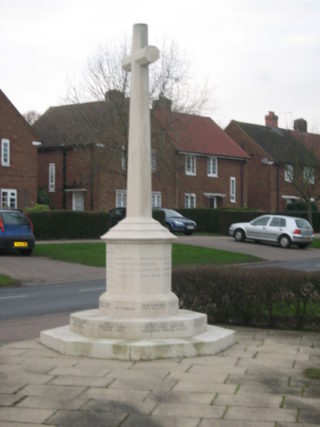
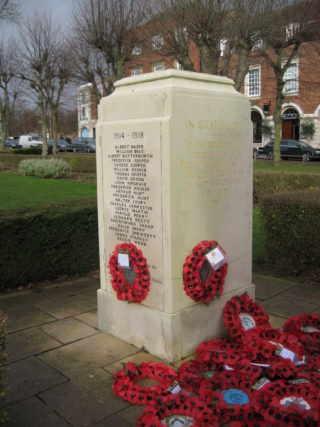
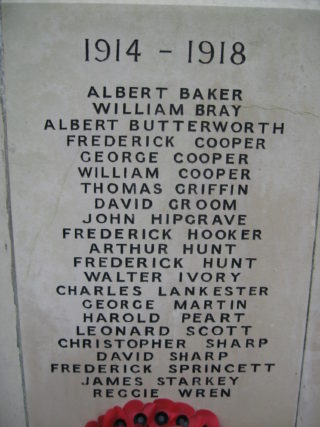
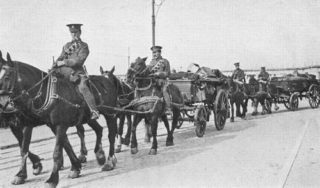
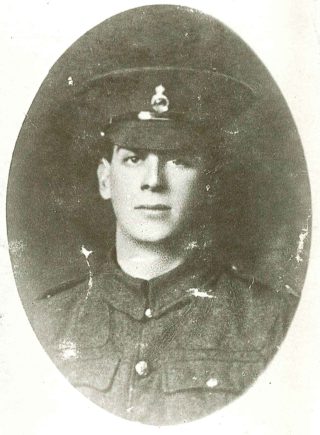
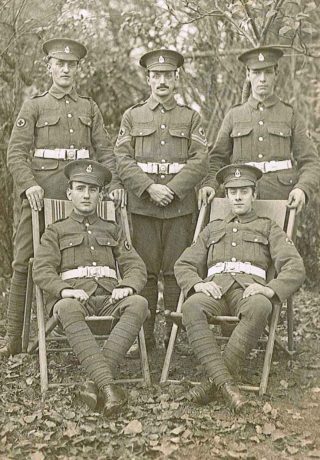
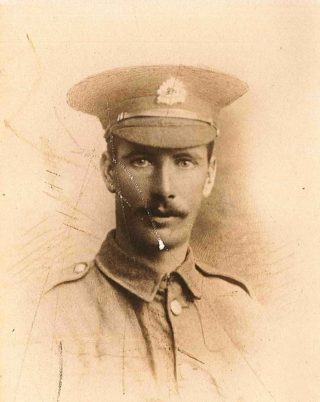
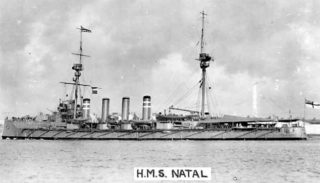
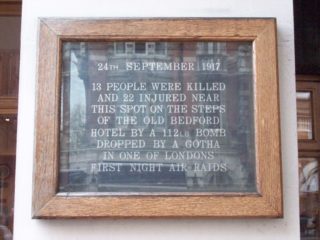
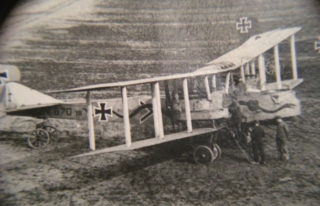
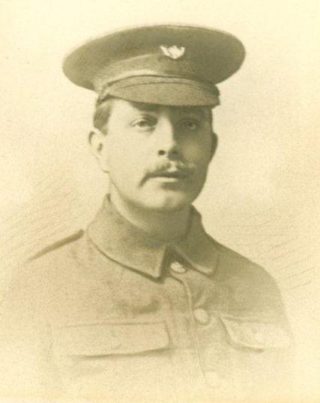






Add your comment about this page
I believe you may have picked up the wrong Frederick Springett from the CWGC. Frederick Richard Springett was born in 1897 in Winslow, Bucks, son of Richard and Nellie. 1901 Census family living in Ramsgate, 1911 Census family living at Hatfield Hyde. Enlisted with Herts Regt, 6058, transferred to Royal Sussex Regt G/15645. Killed in action 25 November 1917 and named on Cambrai Memorial. The Frederick Springett who served as a Sgt with the Essex Regiment was born in Sible Hedingham, Essex in 1885, lived in Halstead, Essex, died 3 July 1916 and is buried at Serre Road Cemetery no. 2.
The council allocated us a house on Hollybush Lane dead opposite this memorial in 1948. You could see it from our kitchen window – a lovely tribute by the citizens. When we drove over to Upperfield Road to my parents we always passed this memorial and admired it.
Albert and Frederick Hunt were brothers. They are my Great Great Uncles. They were born in Hitchin. The parents and family moved to Hatfield Hyde and appear on the census there in 1911. Which is why Albert and Frederick appear on the Hatfield Hyde Memorial.
Reggie was my great uncle, his brother Louis won the mm I do have a picture of reggie and pictures of his brothers Louis and jack (in uniform)